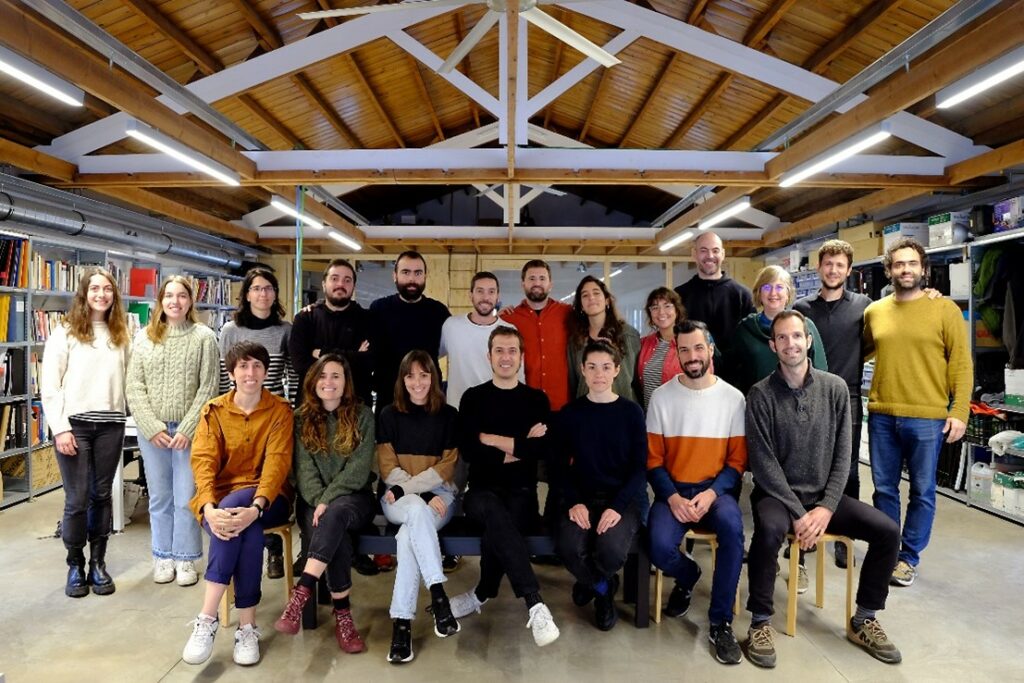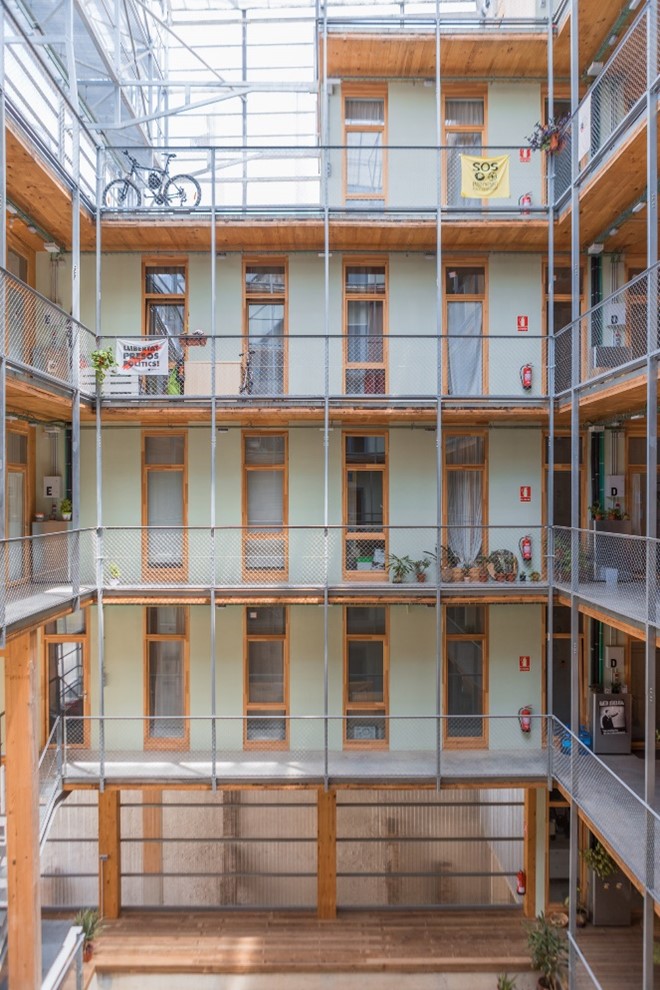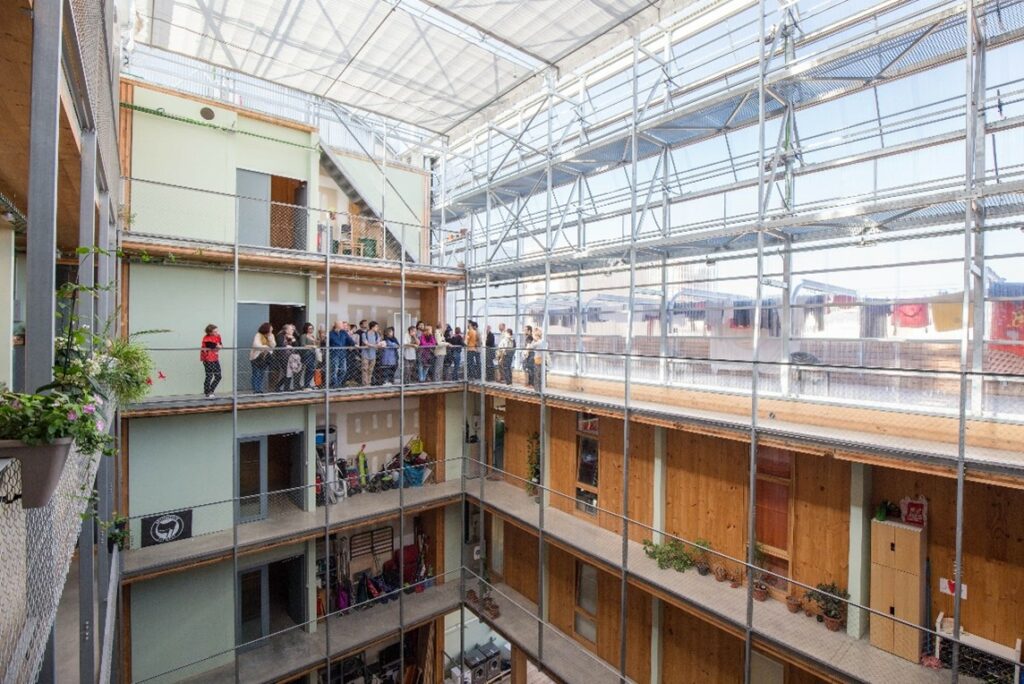Lacol Cooperativa de Arquitectos (Cooperative of Architects) was founded in 2009 by a group of architecture students of the Barcelona School of Architecture (ETSAB-UPC).
La Borda is its stand-out project, as this housing cooperative has become the hallmark of a new way of understanding space and people alike. It was awarded the 2019 City of Barcelona Award for Architecture and Urbanism at the 3rd Barcelona Architecture Exhibition. It also won the European Union Contemporary Architecture Prize for Emerging Architecture.
They were also awarded at the AJAC XII Awards for the “La Model se abre a la ciudad” participatory process. Furthermore, the women of Lacol were awarded the 2021 Moira Gemmill Prize for Emerging Architecture within the framework of the W Awards.

Lacol Cooperative of Architects sees architecture as a way to transform society, using it as a tool to act in a fair and supportive manner, based on a horizontal organisational structure. It strives to improve the quality of life of everyone living in the city.
Who do you look up to in the field of architecture?
This is a tricky question we are often asked and it is difficult to answer because there are so many of us and everyone brings something different to the table. We are inspired by a number of architects, however, if we had to choose one, it would be Lacaton & Vassal, who share the same values as us when bringing their projects to life: social, sustainability, innovation and low cost.
What interests you the most about urban sociology?
What interests Lacol, and me personally, when it comes to urban sociology are all things human, social, and architecture-related. We believe that our work affects people and society alike; the most interesting thing is seeing the role architecture plays in our way of life.
La Borda is a proven success story, so, why is it so difficult to implement it in society at large? Is there a mental barrier?

There are many barriers. La Borda was a trailblazer in many aspects, some of which have not been 100% accepted in our society. From the tenure model, being neither owners nor tenants, but having this assignment of use for life, on the condition that you undertake not to speculate; to smaller home coexistence models, although with more shared spaces with your neighbours; to sustainability, of a building based on cutting down on demand, leaving you with no other choice but to live in a more sustainable way. Not everyone is cut out (or wants) to live like this.
Do you think projects such as this are the future of architecture?
We are still a world away from being the norm, but we see it as a more realistic and interesting future. The future cannot be based on endless consumption of resources, or increasingly living in a more automated and individualised way. So, a project such as this does make for a more promising and brighter future.
What makes it unique?

Projects such as La Borda are unheard of here in terms of the concept as well as the significant number of things they bring together. There are more sustainable buildings, more community buildings, more radical projects in terms of ownership and tenure… However, until now, no project has brought together so many different things. La Borda is the first. Luckily, others are now following in its footsteps.
In your experience, are there city models in which people could access housing?
Projects such as La Borda are part of a broader housing rights movement. We are aware that there are a number of things that go further and we champion the right to housing above many other things. For example, we consider that the right to housing is far more important than empty apartments and speculators buying up properties.
In our view, cooperatives are one of the tools that can be used to solve the lack of affordable housing problem in cities.
How do you approach projects at Lacol?
We like projects that get the community involved. Future users with whom we can talk, share ideas and decide on the future and design of the project. We always aim to go a bit further in all our projects and, always with an eco-social and sustainable outlook. Not to mention the social stratum, which is all inclusive, ensuring that nobody is left out. For example, we are currently rehabilitating housing in disadvantaged neighbourhoods thanks to the European Union’s Next Generation, a project we are extremely proud of.
What are the most important values that you would like to convey as a lecturer of the Master’s Degree in Design at the College of Art & Design of Barcelona?
We like to bring this social vision we talked about earlier into the classroom. In other words, for the design to be people-centred, really taking on board what they have to say, sharing ideas, not just working from the office or stroking the ego of the creator. All these degrees in design, architecture, etc., have bolstered the belief that we are magnificent creators who need answer to no one. What we trying to do is to come back down to earth. And connect more with real life, with people, real users, rather than just featuring on magazine covers. This is one of the key values that we would like to convey in our classes.
What do you expect from the architecture of the future?
We are not pessimists, instead believing that we have the tools to create a better future and to improve people’s lives. Since over 90% of our lives is spent in man-made spaces, this can result in either a good or a bad thing.
For us, it is of the utmost importance for architecture to respond to people’s different needs, not a one-size-fits-all approach.
Lacol strives to generate community infrastructures for sustainable living, through architecture, cooperativism and participation. In other words, to foster the sustainable and social economy while striving to cut down on the environmental impact and improve the day-to-day life of its inhabitants.

